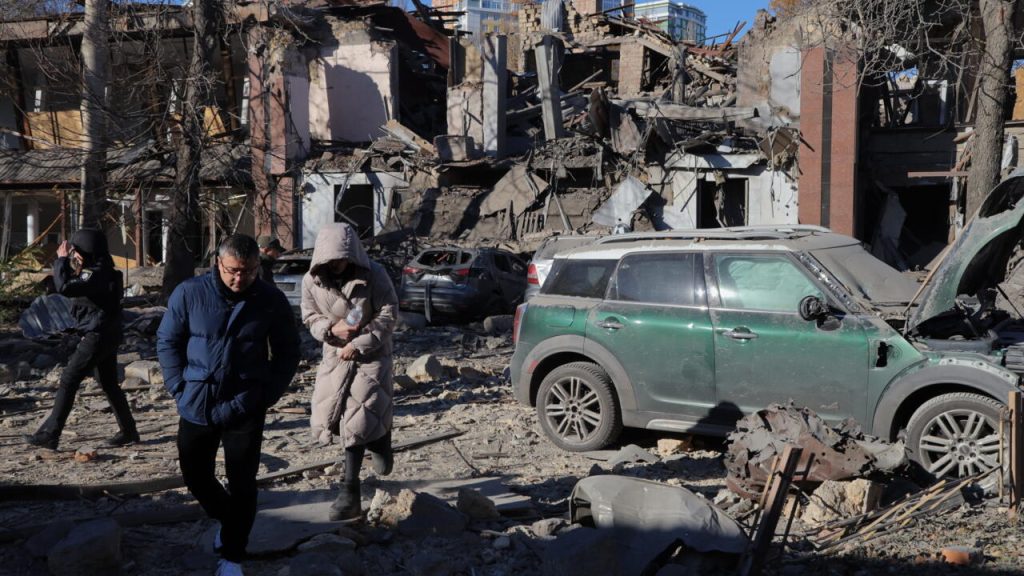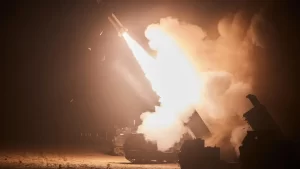Russia and Ukraine trade missile and drone strikes
3 min read
Russia and Ukraine have escalated their military actions, exchanging missile and drone strikes in the latest round of intensifying hostilities. This follows a week of heightened rhetoric and actions that have marked a significant escalation in the ongoing war. Russia conducted nearly 1,500 airstrikes across Ukraine since Sunday evening, targeting about half of the country’s regions, causing dozens of injuries, according to Ukrainian President Volodymyr Zelensky. Meanwhile, Ukraine responded by striking key Russian targets, including an oil depot south of Moscow.
The escalation saw Russia deploy its Oreshnik intermediate-range ballistic missile against the Ukrainian city of Dnipro, a significant move that capped a week of rising tensions. In response, Ukraine fired US-supplied Atacms missiles into Russian territory for the first time, marking a shift in the scale and scope of the conflict. Reports suggest that US President Joe Biden authorized Ukraine to use longer-range missiles against targets within Russia, a move intended as a countermeasure to Moscow’s increased reliance on North Korean troops on the frontlines.
The violence has left a trail of destruction. In Kharkiv, Governor Oleh Synehubov confirmed that 23 people were injured after a missile strike hit the city. Emergency operations were underway as rescue teams worked to assist the victims. The missile used in the attack was identified as an S-400, a sophisticated Russian air defense missile system. Odesa also reported casualties, with ten people injured when missiles struck residential buildings, schools, and a sports hall at a university.
In addition to these strikes, the Ukrainian military said it had launched a successful drone attack on the Kaluganefteprodukt oil depot in Russia’s Kaluga region, southeast of Moscow. The Ukrainian military claimed the attack resulted in a series of explosions and a large fire at the depot, though the Russian military has not officially commented on the strike. Regional governor Vladislav Shapsha confirmed that debris from drones shot down by Russian air defenses caused a fire at an industrial site, and he reported that a total of eight drones had been destroyed.

Ukraine also reported additional attacks in Russia’s Bryansk and Kursk regions, though specific details about the targets remained unclear. Russian military bloggers, however, suggested that the Khalino air base in Kursk was hit by a strike involving eight US-supplied Atacms missiles. Cloud cover prevented satellite images from confirming these claims, but social media footage from Kursk showed flashes of light in the sky, believed to be explosions caused by Ukrainian missiles. While the footage is verified as authentic and filmed in Kursk, it remains unclear whether the flashes were directly linked to Atacms missiles.
The presence of North Korean troops in the Kursk region has become a critical factor in the war, as they are thought to be part of a Russian push to recapture areas previously taken by Ukrainian forces. These troops are believed to be supporting Russian efforts to drive Ukrainian soldiers out of a small section of Kursk captured during a surprise offensive last autumn.
Russia’s Defense Ministry responded by claiming it had shot down eight Ukrainian ballistic missiles, although it did not specify the locations where these intercepts occurred. Meanwhile, Russian forces have continued to target Ukraine’s energy infrastructure, aiming to complicate conditions as the harsh winter approaches. These strikes on critical infrastructure are designed to weaken Ukraine’s ability to maintain power, heating, and other essential services for its population, worsening the already dire humanitarian situation.
The war, which began with Russia’s full-scale invasion of Ukraine in February 2022, shows no signs of slowing down. Both countries appear to be positioning themselves for a strategic advantage before the potential shift in US leadership. Donald Trump, who has vowed to end the war within hours if re-elected as US president, has made headlines with his claim that he could quickly bring the conflict to an end, though details on how he intends to achieve this remain unclear.
As the war continues to ravage Ukraine, both sides are determined to secure advantageous positions on the battlefield, with growing international concern about the conflict’s potential to expand further. The situation remains fluid, and the outcome of this latest round of missile and drone strikes could have far-reaching consequences for the future of the war and the broader geopolitical landscape.





